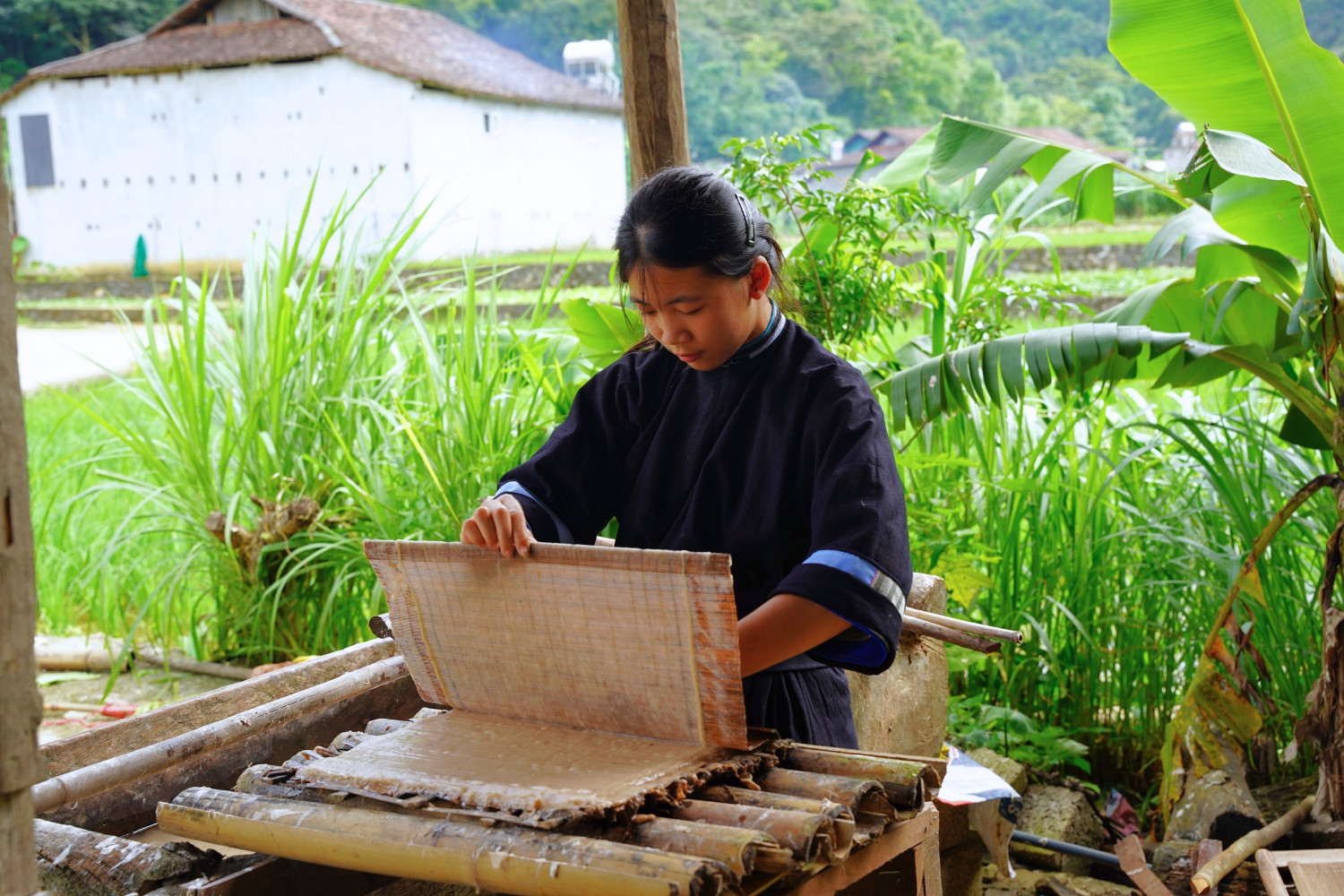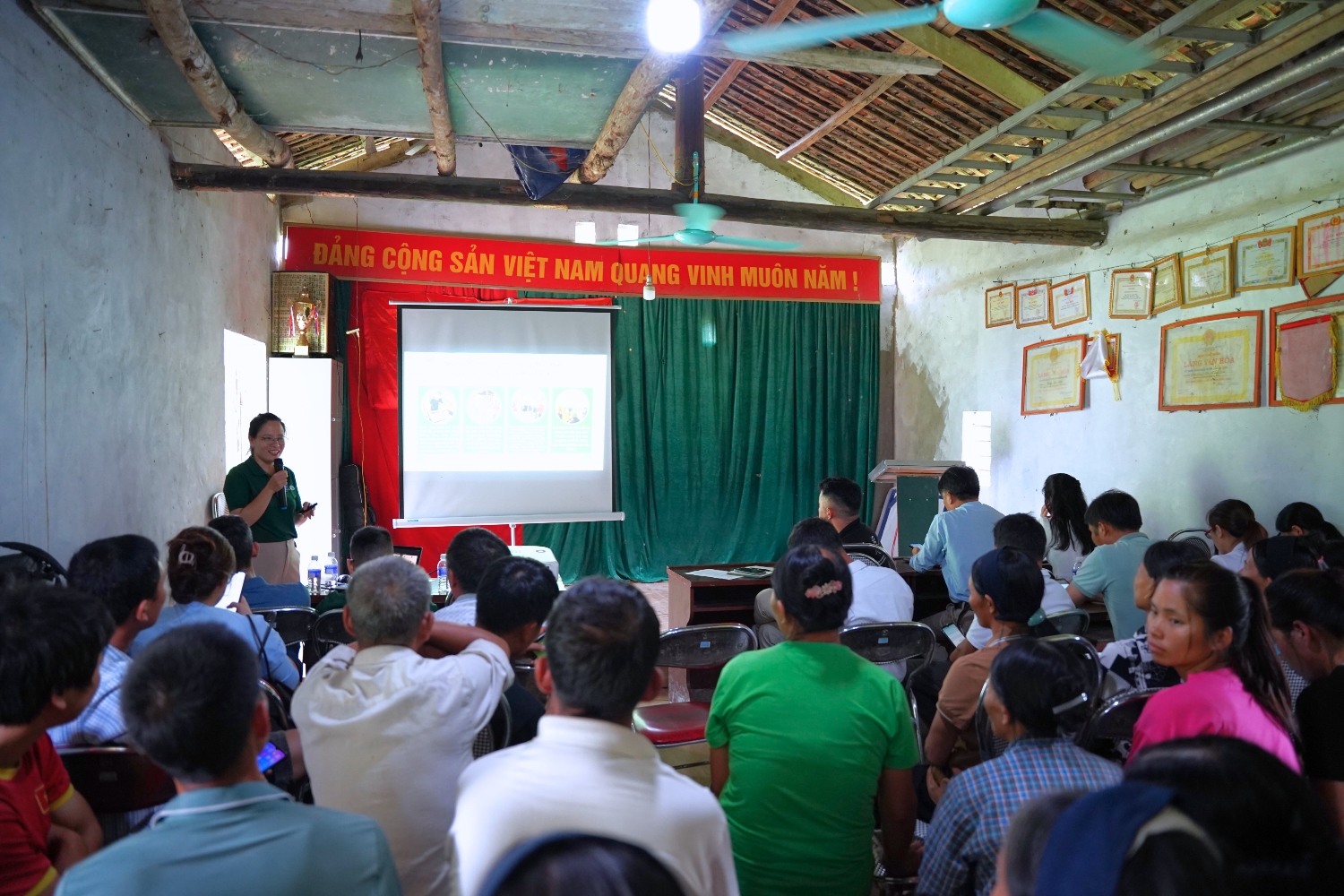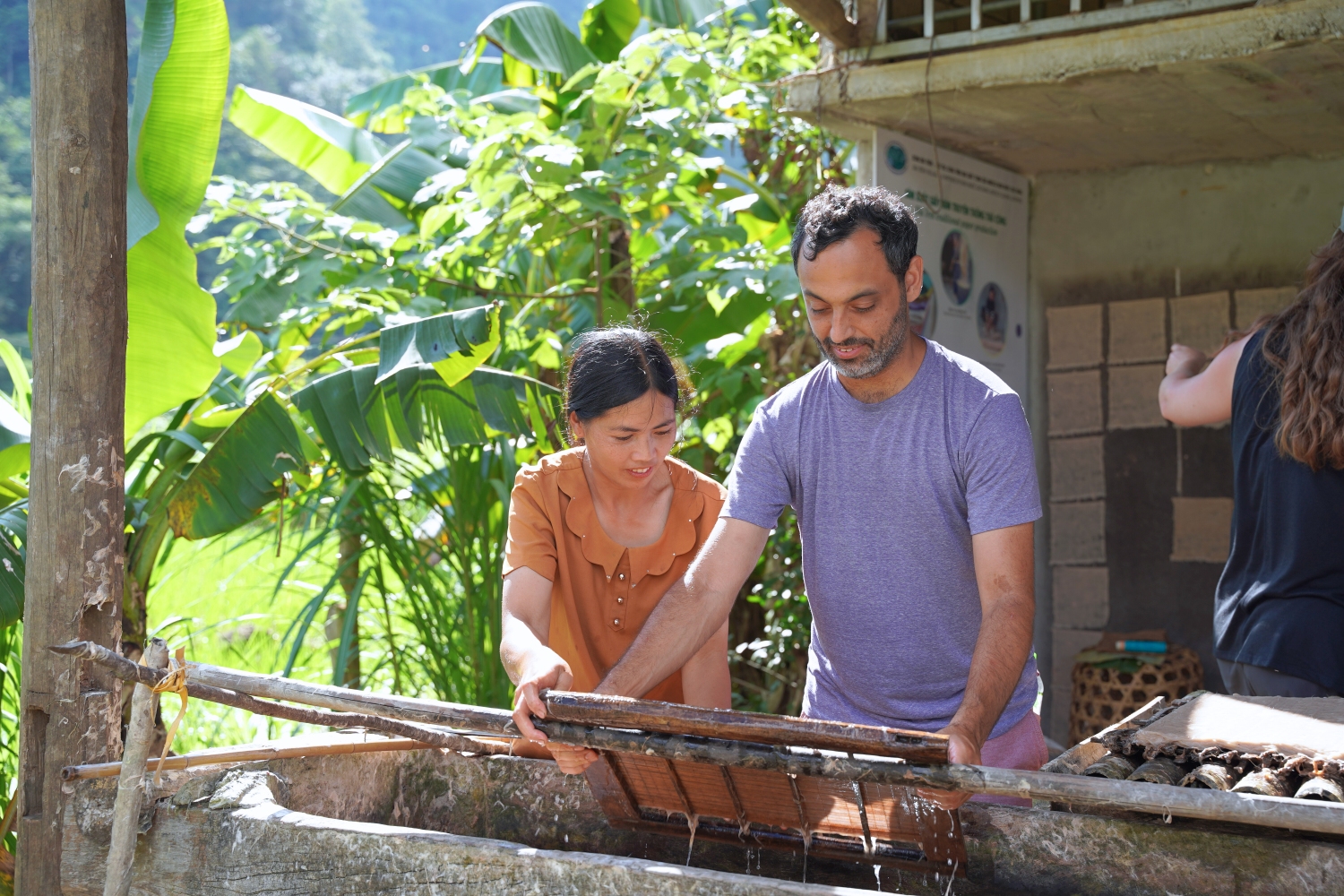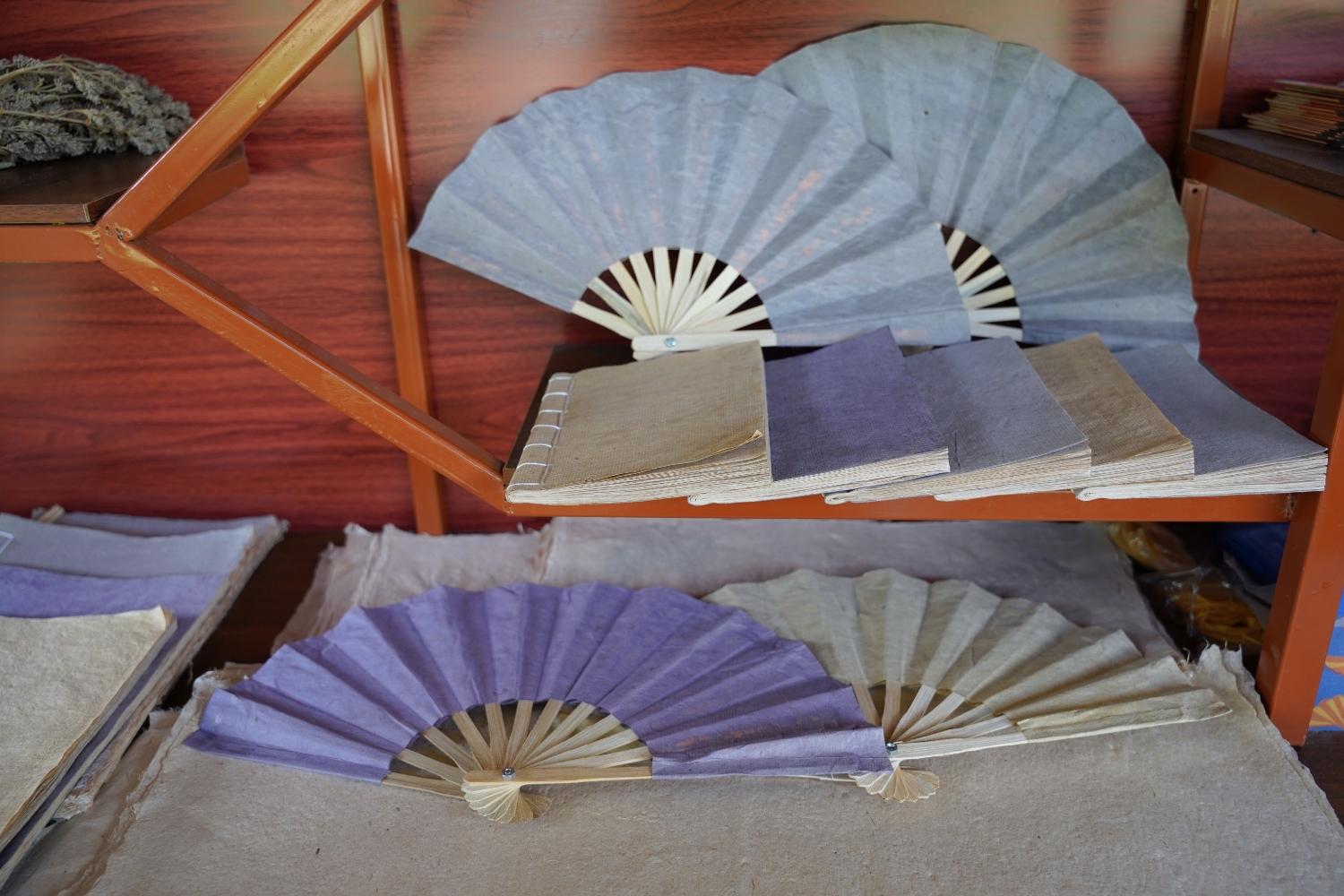Young people keep the traditional craft alive at Dia Tren traditional paper production village

Nestled at the foot of majestic limestone mountains, Dia Tren Village (Quang Uyen Commune) has long kept alive the traditional craft of paper making, which is closely attached to the cultural and spiritual life of the Nung An ethnic group. Through many ups and downs, this craft has quietly presented as an inseparable part of the community’s cultural memory. In the past, papermaking activities mainly took place during the farming off-season. The products were used primarily for local spiritual purposes, with simple designs and packaging, lacking commercial appeal. Without an established brand, these products struggled to compete in the market. Moreover, limited tourism infrastructure, restricted experiential venue, and inadequate panels introducing the craft village meant that the full potential of this tradition remained untapped.
Confronted with this reality, in 2020, the Management Board of the Non nuoc Cao Bang UNESCO Global Geopark (NNCB UGGp) collaborated with local authorities to conduct field surveys and assess the potential of Dia Tren paper village as a geopark site of cultural importance within a exceptional geological values and environment. As a result, the village was included in the Geopark’s eastern tourism route, “Experience traditional cultures in a wonderland”. This was a crucial step in preserving the traditional craft while opening opportunities for sustainable community-based tourism. From a little-known destination, Dia Tren has gradually established its position on the Cao Bang’s tourism map, becoming an attractive destination rich in cultural identity.
In recent years, the Management Board of NNCB UGGp has actively provided consultation and support for villagers and Geopark partners in preserving craft villages, landscaping, and protecting the environment while safeguarding cultural values. Through the responsible and shared benefit tourism model, many initiatives have been introduced, such as self-service shelves of local agricultural products and specialties, Geopark partner goods, community-fund boxes, and craft village’s info panel establishment. At the same time, the Geopark Management Board has worked closely with local authorities to organize training courses aimed at enhancing villagers’ capacity for developing sustainable tourism in line with UNESCO criteria. The Management Board also advised on forming production groups with the participation of women and vulnerable groups, thereby fostering community strength in upholding and developing traditional crafts.

Not only focused on raising public awareness, the Management Board of NNCB UGGp is also a bridge, supporting the Dia Tren traditional paper-making village in connecting with the Zó Project enterprise. This collaboration enables the villagers to learn and apply high-quality paper-making techniques and expand the market for their products. At the same time, the Management Board actively accompanies the craft village in the process of branding: providing consultation on quality improvement, packaging design, and supporting the promotion of products at tourism fairs, tourist sites, as well as at the Geopark Partners’ establishments. Notably, the installation of display corners, check-in venues, product showcase shelves featuring the NNCB Geopark logo has helped increased the Geopark product visibility, enhanced attractiveness of the traditional craft villages, and add more vibrancy to the destination. This is an important step toward helping the traditional craft gradually adapt to the modern market while preserving and spreading indigenous cultural heritage.
A highlight in the transformation process of Dia Tren traditional paper-making village is the passionate continuation of the young generation – those who have proactiveness, creativity, and a deep bond with their homeland. Refusing to follow the worn path, these young people boldly breathe new life into the traditional craft, aligning it with the demands of the modern market. Instead of producing traditional paper only for spiritual rituals, they have researched and designed highly practical products such as notebooks, paper bags, paper fans, and postcards – all imbued with the essence of local culture. These creations not only cater to diverse tastes but also provide opportunities for visitors to engage in hands-on experiences, thereby widespreading the values of the traditional craft. This is a harmonious connection between heritage and contemporary life, helping to bring renewed and lasting vitality to the craft villages.

Mrs. Nong Thi Xanh, a Geopark partner in Dia Tren village, shared: "In the past, I thought the craft of paper making could hardly provide a stable income. But after joining training courses, learning how to improve products while preserving the cultural values of the traditional craft, I changed my perspective on the potential and worth of handmade paper. Orders from tourists, the presence of our products at tourism exhibitions in the province and other localities, and positive feedback from consumers have strengthened my belief that this craft has a future if we know how to innovate." Not only focusing on production, Mrs. Xanh has also been active in learning hospitality and interpretive skills, and sharing the story of the craft village with visitors. The positive feedback, newfeeds, and experience photos shared by tourists on social media have become a source of motivation for her and other young people to continue preserving and promoting their traditional craft. Above all, the paper-making craft is being passed down by Dìa Tren’s young generation as an essential part of family and community life. Nong Thi Thu Huyen, a high school student and daughter of Mrs. Xanh, often helps her family make paper after school and on weekends. Huyen said “"I am very proud to learn the paper-making craft from my mother. To me, each sheet of paper is the result of patience, meticulousness, and love for our traditional craft. I hope to help visitors better understand and appreciate the cultural identity of our Nung people."

The story of preserving and promoting the traditional paper-making craft in Dia Tren village is a vivid example of the effectiveness of combining heritage conservation with community-based tourism development. More than just changes in infrastructure or products, the most precious achievement lies in the spirit of preservation and innovation shown by local residents, especially the young generation. Mr. Vi Tran Thuy, Director of the Management Board of NNCB UGGp, shared: "One of the key criteria for sustainable development is ensuring the succession and active role of young people in carrying on their ancestral crafts. Through training programs and knowledge-sharing activities, the Geopark Management Board has been promoting the diversification and development of local tourism services and activities. This not only creates more jobs but also strengthens young people’s connection to their homeland, helping to sustain traditional livelihoods across generations."
The youth not only breath new life into the craft villages, but also serve as a bridge linking the past with the present, integrating local cultural identity into the process of sustainable development. In this way, a hopeful future is unfolding for the traditional craft, when heritage values are not only preserved, but also passed on and practiced by the next generation.
Source: Luong Thao
Reader Comments
Newer articles
Older articles


